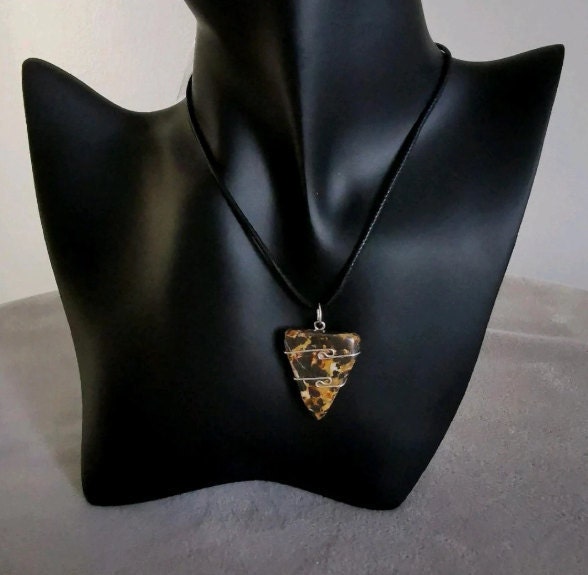Zincite is a mineral composed primarily of zinc oxide (ZnO), often found in vibrant red, orange, or yellow hues due to impurities such as iron or manganese. It forms naturally in zinc ore deposits, particularly in association with sphalerite and franklinite.The most famous natural occurrences of zincite are in Franklin and Sterling Hill, New Jersey, USA. These locations have produced some of the world's most well-known specimens, recognized for their intense colors and crystal formations. Interestingly, large natural zincite deposits are relatively rare, making it a highly sought-after mineral for collectors.Historically, zincite was not widely recognized or utilized until the rise of the zinc industry. Early civilizations, including the Romans and Chinese, unknowingly used zinc compounds when producing brass, an alloy of zinc and copper. However, it was not until the 18th century that zinc was formally identified as an element and its compounds, including zinc oxide, began to be studied in detail.In the late 19th and early 20th centuries, artificial zincite crystals were accidentally created as a byproduct of zinc smelting. These synthetic crystals were found in the chimneys of zinc smelting facilities, particularly in Poland and Silesia, and were later collected and appreciated for their beauty. Over time, synthetic zincite has become a popular material for use in jewelry and metaphysical practices, offering a more accessible alternative to the rare natural form.
While zincite itself is not a primary industrial material, zinc oxide, its main component, has numerous essential applications across various fields. Some of the most prominent uses include:
Cosmetics and Skincare
Zinc oxide is a crucial ingredient in sunscreens due to its ability to block ultraviolet (UV) rays, providing broad-spectrum protection.
It is also used in skin creams and ointments for treating conditions like diaper rash, eczema, and acne, thanks to its soothing and antibacterial properties.
Medicine and Pharmaceuticals
Zinc oxide is commonly found in medicinal creams, particularly for wound healing and inflammation reduction.
It has mild antiseptic properties, making it effective in various dermatological treatments.
Electronics and Semiconductors:
Due to its semiconductor properties, zinc oxide is widely used in the electronics industry, particularly in the production of transparent conductive films, sensors, and varistors (electrical components that regulate voltage fluctuations).
Zinc oxide nanostructures are also being explored for use in advanced electronic devices and solar cells.
Rubber and Plastics Industry
Zinc oxide is a key additive in rubber manufacturing, helping to improve durability, resistance, and overall performance.
It is also used as a pigment and UV stabilizer in plastic production.
Paints and Coatings
Zinc oxide serves as a white pigment in paints, providing anti-corrosive properties and protection against UV degradation.
Beyond its scientific and industrial applications, zincite has gained popularity in the metaphysical community. Many believe that the mineral possesses powerful energetic properties that can positively impact a person’s well-being. Although these claims lack scientific backing, they continue to attract individuals interested in crystal healing and alternative therapies. Some of the purported metaphysical benefits of zincite include:
Energy Amplification and Vitality
Zincite is said to stimulate the body's energy flow, helping individuals feel more active and motivated.
It is believed to boost physical and mental endurance, making it a popular stone for those seeking renewed energy.
Creativity and Manifestation
Many crystal enthusiasts claim that zincite enhances creativity, helping artists and innovators channel inspiration into tangible results.
It is associated with manifestation, assisting individuals in turning ideas into reality.
Emotional Healing and Confidence
Zincite is thought to balance emotions, alleviating stress and promoting a sense of confidence and self-empowerment.
Some practitioners use it to help release past traumas and encourage personal growth.
Chakra Alignment
Zincite is particularly linked to the root and sacral chakras, which are believed to govern one’s sense of stability and passion.
It is said to enhance the flow of life force energy, contributing to overall well-being.
Due to its rarity in natural form, zincite is highly prized among mineral collectors. Specimens from the Franklin and Sterling Hill deposits are particularly sought after, often commanding high prices in the market. Collectors admire the vibrant colors and crystal structures that make each piece unique.
On the other hand, synthetic zincite has gained popularity as a more affordable alternative. While not naturally occurring, these lab-grown specimens share similar aesthetic properties with their natural counterparts and are commonly used in jewelry, carvings, and metaphysical applications.
For those interested in acquiring zincite, reputable mineral dealers and gemstone suppliers offer both natural and synthetic varieties. It is essential to distinguish between the two, as natural specimens are significantly rarer and more valuable.


